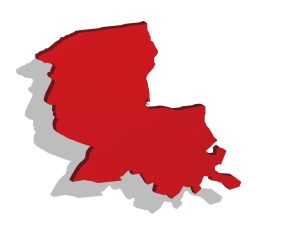Tulane transitions from Blackboard Learn to Canvas
September 14, 2016
For many years Tulane has used Blackboard Learn as its go-to educational platform for online interactions between students and teachers, and those years were riddled with complaints. Canvas, for better or for worse, will take the place of Blackboard completely in spring 2016.
The university began its transition to Canvas by piloting the system during both the 2012 and 2016 academic years. After receiving the overwhelmingly positive feedback of Canvas from faculty and students, as well as their own reports on the product itself, the university concluded Canvas would best suit the interests of the Tulane community.
Spanish professor Leah Sand said she welcomed the platform changes.
“[Canvas is] user-friendly, even for old-school folks like me who are not always so quick to absorb new technologies,” Sand said.
Canvas is a software designed to make communication between professors and students easier. It features a service model that makes small improvements to itself over time rather than requesting more time-consuming updates, and it is compatible with other enterprise systems, like Box, for easy delivery of material into courses.
Tulane Faculty Technology Coordinator, Dr. Michael Griffith, likens Canvas to other social systems our community interacts with on a regular basis.
“Canvas is a younger and more agile product…which allows both faculty and students to determine exactly when, where and how they would like updates about their course materials,” Griffith said.
Professor Sand, who is new to Tulane this year, says she feels Canvas’ user-friendly interface allows both professors and students to be more active within a course.
“Canvas allows you to do even more, both as an instructor and student,” Sand said. “It allows individual instructors to adapt it to the particularities of their course content, and also to decide how much or little they want to integrate the platform into the everyday workings of the course.”
Though Canvas itself has been met with positive reviews, the transition to Canvas has proved somewhat challenging for some students, as some professors have not yet chosen to switch over from the university’s previous platform, Blackboard Learn.
Freshman Aubrey Hermen has professors who use both systems simultaneously.
“Navigation between the two is confusing because some assignments are posted on canvas while others are posted to Blackboard [Learn],” Hermen said. “[However] Canvas has proved easy to navigate. I’m able to quickly find my assignments under the organizational tabs.”
Despite the time it may take to get the university completely accustomed to the Canvas system, Griffith reassures the Tulane community that using Canvas is a step in the right direction.
“We are very excited about the new opportunities that Canvas affords us as we look toward the future of academic technology at Tulane,” Griffith said.
For those interested in learning more about the Canvas educational system, Jared Stein, the vice president of higher education strategy at Instructure, the company that created Canvas, will be giving a keynote address at 12:15 p.m. on Oct. 7 in the Stibbs room of the Lavin-Bernick Center for University Life as a part of Tulane’s Tech Day activities.









Leave a Comment